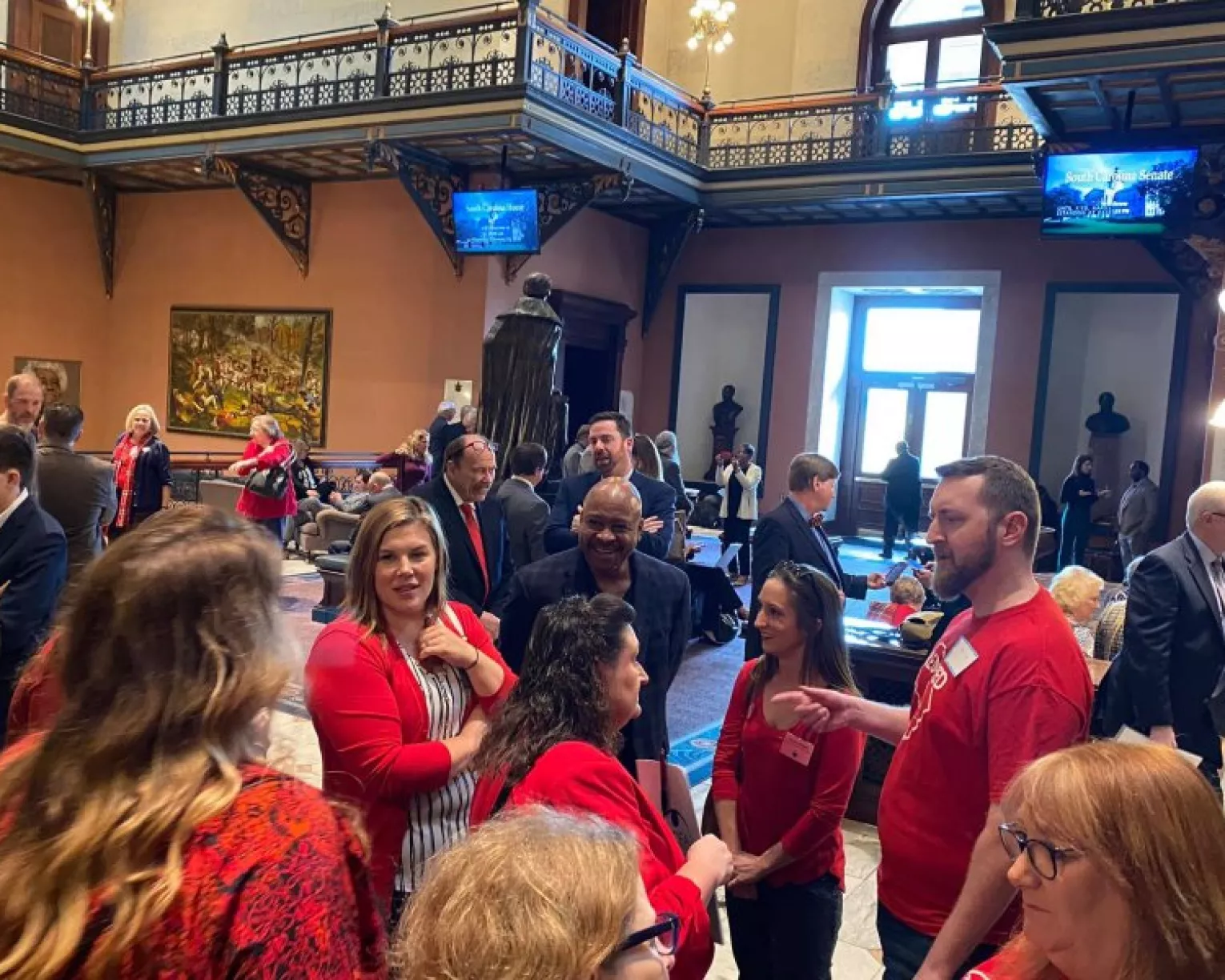
Key Takeaways
- Registered apprenticeships--long valued in the trades--offer aspiring teachers a lengthy residency that prepares them well for classroom challenges.
- Apprenticeship programs also show promise as a step to solving the teacher shortage and a way to diversify the profession.
- The Biden administration has expanded support for states looking to start and grow teacher apprenticeship programs.
Cheryl Libutti was looking for a way to change her life when she sat down for breakfast with the paper one morning in July 2021.
The pandemic had seriously damaged the home organizing business Libutti had run in Albany, N.Y., for the previous seven years. And the mom of three was longing for a career that offered a strong sense of community and purpose—qualities she enjoyed during the decade she had spent as a social worker.
“The front-page story that morning was about Classroom Academy. It explained that apprenticeships are a new way to train teachers, and that you earn a living wage while you’re doing it,” she says. “I literally emailed the program organizer at NYSUT (New York State United Teachers) that same day.”

As states nationwide continue to grapple with the educator shortage crisis, the National Education Association and its affiliates are working to establish apprenticeships that will bring a pool of highly qualified candidates to fill those positions.
These apprenticeships are “earn as you learn” programs in which aspiring educators are paid a living wage while they take courses and spend one or two academic years working alongside an experienced teacher in a school.
Libutti is now in her second year of a two-year graduate program at SUNY-Plattsburgh and her residency in the Schenectady Public School District.
She says she would not have gained the depth and breadth of skills she has earned over the past two academic years in a traditional student teaching experience, which typically lasts just three to four months.
“By the time you settle in and get to know your colleagues and students, your student teaching is over in a traditional program. Instead, I’ve gotten to track two full years and helped with everything from setting up the classroom to delivering lessons, dealing with social and emotional issues, handling assessments, and working with families.”
In standard programs, student teachers are unpaid and typically still paying for their degree.
Classroom Academy offers students an annual stipend of $22,000, plus $5,000 per year in tuition assistance for college tuition, which presents the biggest obstacle to college for students of color.
“I honestly don’t think I could have gone back to school to become a teacher without this program,” says Libutti, “and I know that many others in my apprenticeship cohort would say the same.”
Unions, allies take on the shortage
Low pay and lack of respect are two incessant factors fueling the teacher shortage crisis. While the shortage was already present before the pandemic, that only worsened the problem.
According to a recent federal survey, 53 percent of public schools reported being understaffed at the beginning of the 2022-23 school year.
Some state lawmakers have seized on the shortage to try to institute band-aid solutions that do nothing to remedy the underlying causes of the educator shortage. Those misguided measures include temporary pay bonuses; emergency certification of unqualified individuals; ballooning class sizes; and increased educator workloads.
"Too often people want a silver bullet solution or will implement a Band-Aid approach," says NEA President Becky Pringle. "These shortages are severe. They are chronic. And they will only be fixed with systemic, sustained solutions."
Apprenticeships clearly hold promise as part of the solution.
Although the programs come in all shapes and sizes, there are key qualities that the National Education Association supports for all teacher apprenticeship programs, including:
-
Paid clinical practice for a full academic year or more
-
Additional compensation, training and support for the attending teachers—the mentors host and guide aspiring educators
-
Aspiring educators should not be the teacher of record until they complete the program.
Supported and sustainable
The Biden administration is doing its part to encourage states to pursue sustainable solutions.
If states structure their teacher apprenticeships according U.S. Department of Labor guidelines and formally register their programs with DOL or their state-level equivalents, they can use Workforce Innovation and Opportunity Act Title I funds to support these programs.
Many who are in the know are thrilled to see teacher apprenticeship programs proliferating.
"The student teaching experience was designed in the 1950s and hasn’t really changed much, says Colleen McDonald, a National Board Certified Teacher and former classroom educator who now manages Classroom Academy.
"Meanwhile, the profession has changed greatly. Programs with residencies based more on medical model where you are embedded for a long time are without question the best way to prepare teachers to handle the behavioral and social-emotional issues that student bring with them to the classroom, she says."
The DOL recognizes the value of the importance of union lead and consulted programs.
NEA affiliates in New Hampshire, Washington, Minnesota, Alaska, and North Carolina helped create their programs, though not all of them are formally registered apprenticeship programs that adhere to DOL guidelines.
Some states have used American Rescue Plan funding or ESSA Title II money to support their teacher apprenticeship programs.
A well-established body of research on trade apprenticeships show that they increase racial diversity in their fields. They also help support "non-traditional" candidates, including career changers like Cheryl Libutti.
"I have loved establishing relationships with students and their families, and also with colleagues and my cohort in Classroom Academy," Libutti says. "I could not feel better supported than this."

